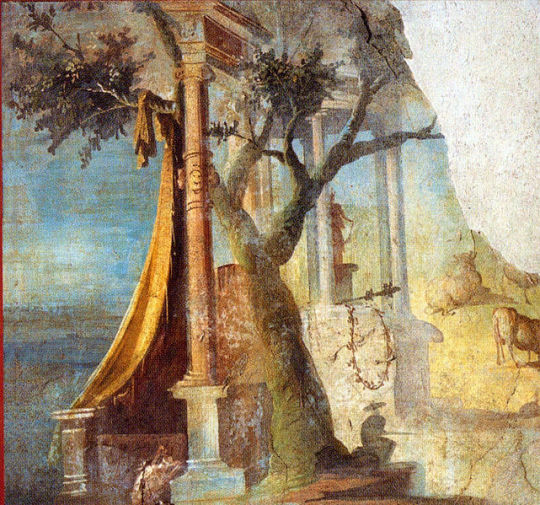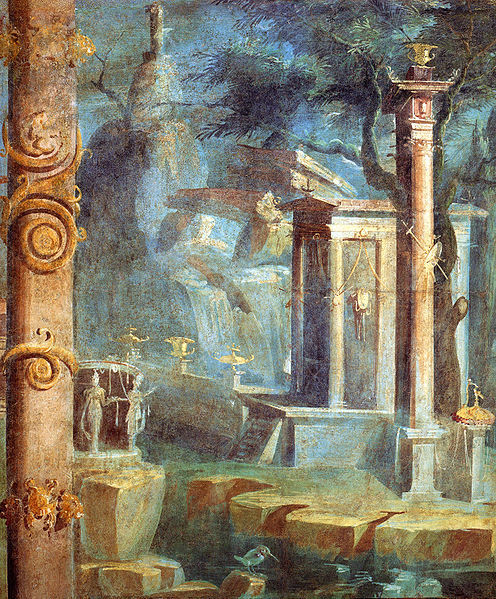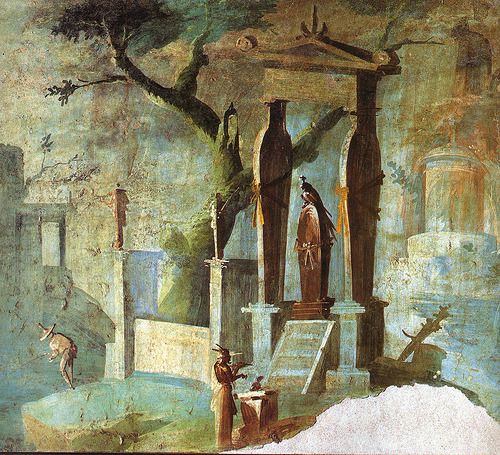
Archaeological Site of Dion:
A votive statue of Ιοulia Phrougiane Alexandra from the sanctuary of Isis. (All the statues on the site are replicas placed where the originals stood, while the originals are either in the museum or in storage).
The excavation of the sanctuary of Isis proved a particularly difficult task since it was under a river originally. The river bed had to be moved for the excavation to be completed, but subterranean springs still flood the site, demanding a complicated and expensive drainage system for the study of the site to continue. In the antiquity a spring was actually housed in one of the shrines, and the water of another passed in a basin under the statue of Aphrodite Ypolympidia.
To be quite honest most people do come to see the statues submerged in water. At the shrine of the egyptian gods in Brexiza (Marathon, Attica), the sanctuary was actually built on an isle in a marsh with imported birds and egyptian flora so as to resemble the nilotic landscape, Perhaps the choice of a marsh-like environment here was no accident either, and the flooding was controlled to create a similar setting.
These murals from the Archaeological Museum of Naples (Italy), found at the Temple of Isis in Pompeii, depict islands with small shrines and fishermen. The multiple shrine system can be found at Dion too, with the sanctuary of Demeter- close to the sanctuary of Isis- as it would have been in the Classical period.



























